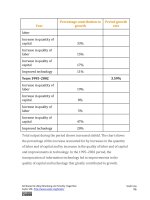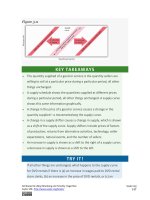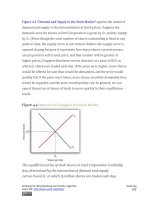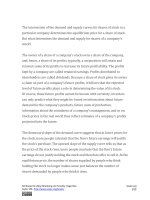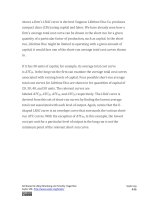Authors libby rittenberg 878
Bạn đang xem bản rút gọn của tài liệu. Xem và tải ngay bản đầy đủ của tài liệu tại đây (601.81 KB, 1 trang )
on Aspirin and Analgesic Poisonings,”American Economic Review 74(2)
(1984): 324–27.
ANSWER TO TRY IT! PROBLEM
Deregulation of the airline industry led to sharply reduced fares and
expanded output, suggesting that supply increased. That should
significantly increase consumer surplus. Specifically, the supply curve
shifted from S1 to S2. Consumer surplus is the difference between the
total benefit received by consumers and total expenditures by
consumers. Before deregulation, when the price was B and the
quantity was Q1, the consumer surplus was BCD. The lower rates
following deregulation reduced the price to consumers to, say, F, and
increased the quantity to Q2 on the graph, thereby increasing
consumer surplus to FCG.
Figure 16.4
[1] Sam Peltzman, “The Effects of Automobile Safety Regulations,” Journal of
Political Economy 83 (August 1975): 677–725.
[2] Alma Cohen and Liran Einan, “The Effects of Mandatory Seat Belt Laws on
Driving Behaviour and Traffic Fatalities,” Review of Economics and
Statistics 85:4 (November 2003): 828–43.
Attributed to Libby Rittenberg and Timothy Tregarthen
Saylor URL: />
Saylor.org
878
